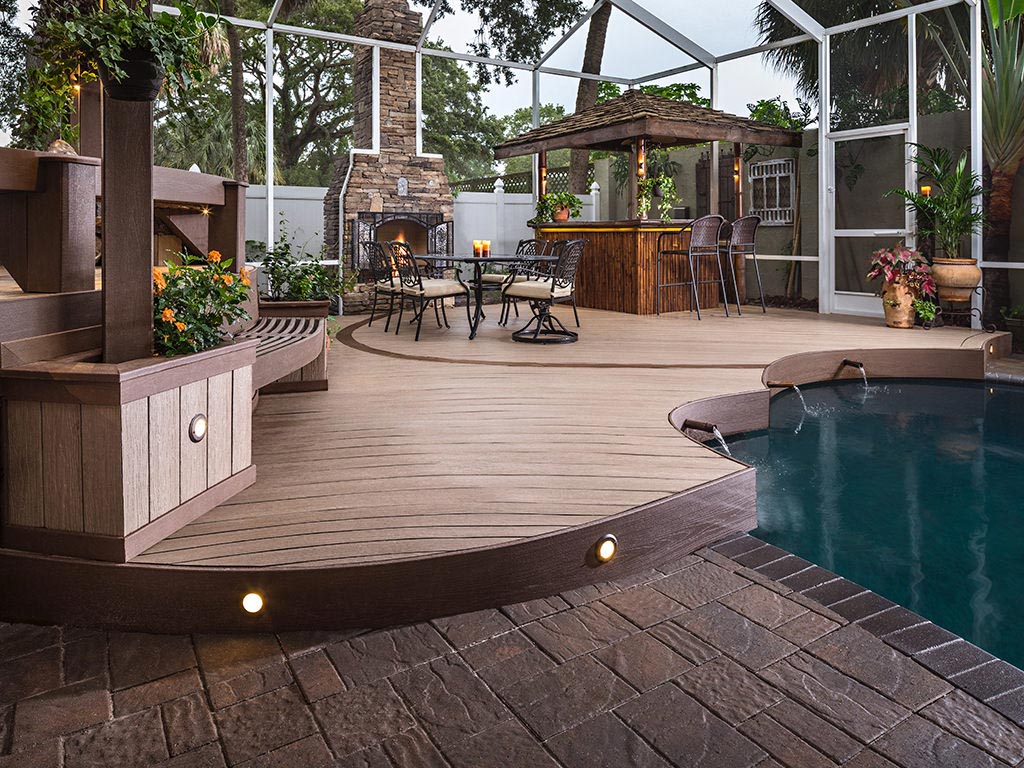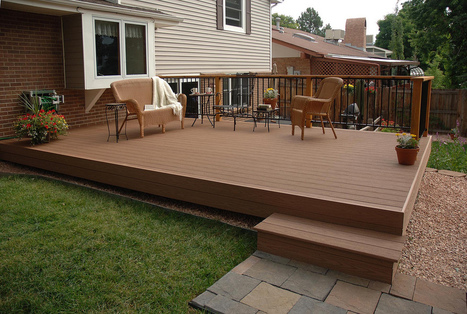Discover everything you need to know about deck installation Austin before starting your next project.
How to Pick the Right Materials for Your Deck Setup Project
Selecting the appropriate products for your deck installment project can seem challenging. There are countless variables to think about, from resilience and upkeep to aesthetics and ecological effect. The choice between typical timber and composite products, each with its very own collection of benefits and downsides, can be particularly challenging. The secret is to balance your budget plan, layout choices, and way of living requires to produce a deck that will enhance your outdoor space for many years to find.
Understanding the Different Kinds Of Deck Materials
When embarking on a deck installment job, the choice of products ends up being a pivotal choice. Different alternatives are offered, each with unique features and aesthetic allure. Standard wood, for example, offers a classic, natural appearance and is generally extra affordable. It can warp over time and needs normal maintenance. Composite products, on the other hand, are a blend of timber and plastic, providing toughness and resistance to weather elements. They demand much less maintenance compared to wood yet are generally much more pricey. Another choice is plastic, which is basically maintenance-free and resistant to insects and rot, albeit much less natural-looking. By recognizing these differences, property owners can make a much more enlightened choice on the most suitable deck material for their certain demands.
Evaluating the Longevity and Maintenance Requirements of Deck Products
Examining the longevity and maintenance requirements of deck materials is an important step in deck setup. Toughness entails the material's ability to hold up against extreme climate problems, wear and tear, and its durability.
Understanding maintenance requirements is equally crucial. Some products require normal sealing or discoloring to maintain their appearance and stand up to moisture damages, while others, like composite outdoor decking, demand much less maintenance. By assessing these variables, one can choose one of the most appropriate outdoor decking material, making certain a balance between longevity, maintenance requirements, and visual appeal.
Cost Analysis: Contrasting Timber and Composite Decking
Although price may initially appear like an additional worry, it is a considerable element when comparing timber and composite outdoor decking. On the other hand, composite outdoor decking, while pricier originally, needs much less upkeep, potentially minimizing long-lasting expenses. Potential deck proprietors have to consider their budget and desire to maintain their decks when determining between timber and composite decking.
Visual Appeals and Style Flexibility of Decking Materials
Natural timber outdoor decking offers a classic, classic appearance, while composite materials offer a vast variety of colors and appearances to fit diverse preferences and designs. Composite products, while less flexible in layout, are still versatile sufficient for the majority of deck styles. These elements, therefore, are essential components in the option of outdoor decking material.
Ecological Effect of Decking Products
When selecting outdoor decking materials, one have to think about not just aesthetics and longevity, however additionally the environmental influence. It is essential to analyze the sustainability of materials and discover recycled decking choices. Comprehending the prospective effect on regional ecological communities will certainly make certain a much more environmentally responsible choice.
Evaluating Material Sustainability
In the realm of deck building and construction, examining product sustainability is an essential action. This entails evaluating the environmental impact of each prospective material, thinking about variables such as the power needed for its manufacturing, its carbon impact, and its end-of-life disposal or reusing alternatives. Timber is a renewable resource, but unsustainable logging techniques can lead to deforestation. Conversely, composite decking products commonly combine timber and plastic, minimizing the demand for brand-new lumber yet boosting dependence on fossil fuels. Light weight aluminum and More hints other steels might be extra long lasting and recyclable, yet their removal and processing can be energy-intensive. Therefore, the selection of outdoor decking materials need to stabilize capability, aesthetics, price, and sustainability to make sure an accountable and long-lasting installment.
Recycled Outdoor Decking Options

Composite outdoor decking is especially prominent due to its longevity and convenience of maintenance. It's immune to rot, insects, and fading, making it a long-lasting alternative. Recycled plastic decking, on the various other hand, is highly resilient and needs marginal maintenance. While these materials may carry a greater initial cost, their durability and lowered environmental impact make them a smart financial investment for the eco-conscious home owner.

Impact on Local Environments
While the advantages of using recycled products for decking can not be overemphasized, it's equally vital to think about the wider environmental effects of these choices. Correct disposal of old decking is crucial to reducing land fill waste. Essentially, an eco-conscious deck task needs careful product selection, sustainable sourcing, and liable disposal.
Making Your Final Choice: Tips for Selecting the very best Deck Products
As the short article changes into the subtopic of "Making Your Decision: Tips for Selecting the deck installation most effective Deck Products", it is important to recognize the variety of deck materials readily available. Striking a balance between durability and looks is important in this choice procedure. The adhering to discussion will assist viewers in making an informed choice based on these crucial factors to consider.
Understanding Different Deck Materials
The job of picking the appropriate products for your deck installment can appear discouraging as a result of the substantial array of options available. However, understanding the various products can streamline this process. Wood is a popular selection, providing a classic aesthetic and cost. Sorts of wood used include pressure-treated lumber, cedar, and redwood. Compound products, made from a blend of wood and plastic, are low-maintenance and immune to rot and pests. Vinyl or PVC decks are much more durable and call for much less maintenance than composite products, yet they can look less natural. Light weight aluminum decks are solid, lightweight, and immune to rot, however they are also the most pricey option. Each product has its own benefits and downsides, making it critical to consider your certain needs prior to making a final choice.
Toughness vs. Aesthetic Appeals Balance
Balancing longevity with aesthetic appeals can be an obstacle when selecting deck materials. The choice frequently comes down to individual preferences and the deck's intended use. High-traffic areas might demand sturdy products like composite decking, which withstands wear and tear yet may lack the natural beauty of wood. On the other hand, wood uses a timeless appeal and warmth that synthetic products battle to reproduce. However, it requires much more maintenance and may not last as long. Property owners need to strike a balance, considering both the deck's practical demands and their visual choices. Click This Link By doing so, they can guarantee their deck continues to be a practical and appealing outside area for many years to come.
Final thought
Finally, selecting the appropriate materials for your deck setup task calls for careful factor to consider of variables such as resilience, upkeep, price, aesthetic appeals, and ecological influence. Whether you opt for conventional timber or composite products, your selection should line up with your budget plan, style choices, and lifestyle. Eventually, the very best decking material is one that improves your outside area and supplies satisfaction for several years ahead.